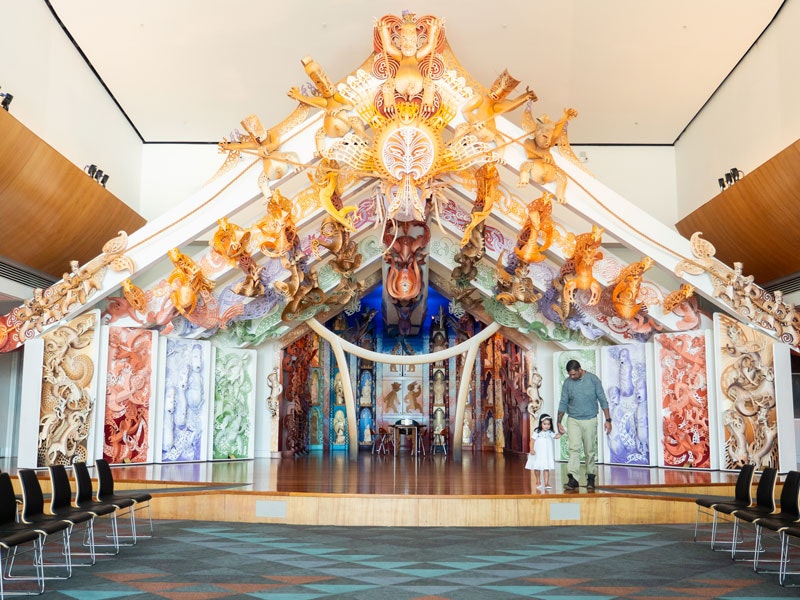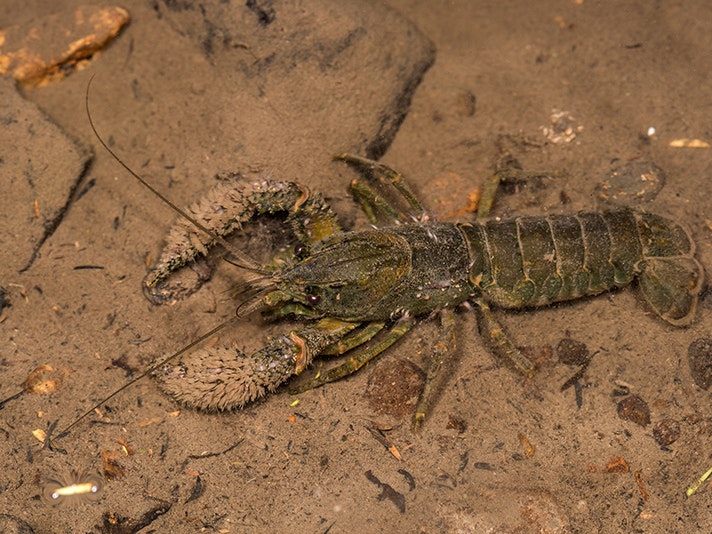
Rongomaraeroa
An authentic and inclusive marae (communal meeting place) for the 21st century.
On now
Permanent exhibition
Exhibition Ngā whakaaturanga
Free museum entry for New Zealanders and people living in New Zealand
Open every day 10am-6pm
(except Christmas Day)
Free museum entry for New Zealanders and people living in New Zealand
Scampi is the only marine lobster that’s unique to New Zealand – it’s fussy about where it lives and doesn’t travel far.
Scampi settle down fast and lay just a few hundred big eggs.
That’s totally different from our rock lobsters – they hatch hundreds of thousands of larvae which live in ocean currents for a year or more, sometimes as far away as Ahitereiria, before reaching New Zealand coasts.
Female scampi with eggs, 2019. Photo by Karen Middlemiss, courtesy of Cawthron Institute
Scampi eggs are bright blue – but they’re safely hidden from predators under the mother’s tail. And deep down where scampi live, there’s not much light to see the eggs.
The larvae swim in currents above the sea floor for about a week before settling down.
Chatham Rise, 2007. Photo by NIWA Deep-Towed Imaging System camera, Oceans Survey 20/20 Chatham-Challenger
Scampi spend much of their lives sheltering in these short burrows. In the very first post larval stage, the scampi gets busy digging around in the mud, learning to dig a borrow. This is a critically important part of their lives to avoid predation.
This page is part of Te Ika Whenua | Unique NZ section of Te Taiao | Nature at Te Papa.

An authentic and inclusive marae (communal meeting place) for the 21st century.
On now
Permanent exhibition
Exhibition Ngā whakaaturanga

Kōura or Paranephrops zealandicus and Paranephrops planifrons live in freshwater places and are valued kai (food) for many people in Aotearoa New Zealand.